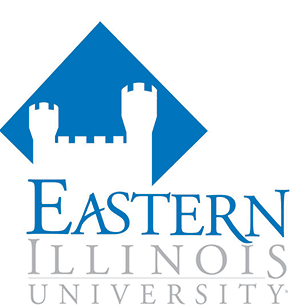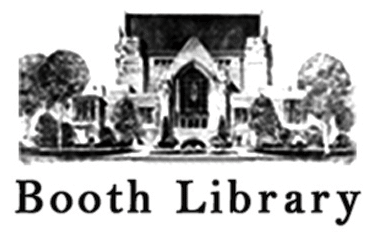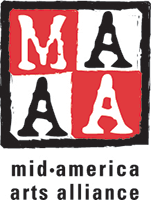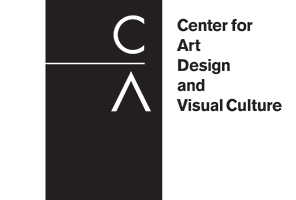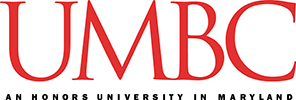For All the World to See

Events and Activities
Opening reception/program
7 p.m. Thursday, Sept. 8, West Reading Room
“Mirror, Mirror on the Wall: Race Relations and Reflection”
Keynote speaker: Dr. Janice Marie Collins, assistant professor, Department of Journalism and
Institute of Communication Research, University of Illinois, Urbana-ChampaignDuring the struggle for civil and human rights, the power of visual culture through media gave voice to the voiceless, centered stories and people from the margins, and redesigned the “race” for equality. This resulted in Americans being forced to address their own beliefs and identity construction through one-way and two-way reflection. The three R’s For All the World to See : race, relations and reflection.
Lecture: 6 p.m. Wednesday, Sept. 14, Witters Conference Room 4440
“A Picture is Worth... Images and Politics in the Modern Civil Rights Era”
Dr. Kevin Anderson, associate professor, Political Science DepartmentThe struggle for equal rights in the United States evolved into a modern confrontation over the meaning of individual freedom, equality and justice in the nation. How did the nation react to the protest against unequal treatment of African-Americans? Did the marches, sit-ins and rallies stir a moral reaction that provoked political change? Was the power of images (photos and television coverage) a strategic choice among African-American political activists? This presentation will discuss both the strategic and moral implications of images during a charged and politically evolutionary time.
Lecture: 4 p.m. Monday, Sept. 19, Witters Conference Room 4440
“Collecting, Preserving and Interpreting Material Evidence of the Struggle for Civil Rights”
Dr. Deb Reid, professor, History DepartmentEvocative photographs of well-dressed civil rights activists at sit-ins and marches, of protestors beaten and of leaders assassinated convey powerful messages about competing ideals of liberty and equality. What can these visual records tell us if we look into the images more deeply, and if we expand beyond the image to the material evidence that the still images document? What material culture do we see? Why is collecting some of this material evidence so controversial?
Respecting the history includes being sensitive to the local residents and to the communities where conflict occurred. This poses challenges to the collecting effort. Should items be left in impoverished places where benign neglect may contribute to the artifact’s or site’s decay? Or should such reminders of “unpleasantness” be destroyed? Case studies of collecting and preserving well-photographed artifacts at the heart of pivotal rights struggles include the Woolworth’s lunch counter in Greensboro, N.C., collected by the Smithsonian Institution; a house in Little Rock, AR, facing an uncertain future but which housed progressive black reformers with very different approaches to attaining civil rights; and the Lorraine Motel in Memphis, where Martin Luther King was assassinated, now part of the National Civil Rights Museum.
Lecture: 4 p.m. Thursday, Sept. 22, Witters Conference Room 4440
“Racialized Context of Disaster”
Dr. Bill Lovekamp, associate professor, Department of Sociology/AnthropologyThis presentation will look at historical and current racialized context of disasters and notions of environmental racism present in our society, with additional focus on visual representations in the media and popular culture. Lovekamp will discuss how press coverage of various disasters such as Hurricane Katrina have had an impact on emergency operations, warning communication and community response, and how this shapes “outsider” perspectives of communities that are impacted.
Musical performance: 2 p.m. Friday, Sept. 23, West Reading Room
“Oh Freedom! Music of the Civil Rights Movement”
Chris Vallillo, Illinois Humanities Council Road ScholarThe Civil Rights Movement has been described as one of the greatest singing movements that this country has experienced. From We Shall Overcome to This Little Light of Mine , music played a vital role in that historic struggle as both an inspirational rallying point and a means of spreading the message of equality and justice. From the Freedom Rides to the jails of Montgomery, AL, and from Parchman Prison all the way to Washington, D.C., both old and new songs spoke of the yearning for equal rights, the struggle, and the determination to win freedom. They engaged and energized the nonviolent civil disobedience movement led by Dr. King and others. Music was a huge part of the process both locally and nationally. In a presentation created to celebrate the 50th anniversary of the Civil Rights Act of 1964 and the Voting Rights Act of 1965, folksinger Chris Vallillo performs pivotal selections from the music that inspired and sustained this landmark movement. Intermixed with the music, Vallillo presents first-hand accounts of the historic struggle and discusses the impact of music upon one of our nation’s most important social causes. His program is sponsored through a grant from Illinois Humanities.
Lecture: 4 p.m. Thursday, Sept. 29, Witters Conference Room 4440
“Branding Civil Rights”
Dr. Stephen Eskilson, professor, Art DepartmentThe civil rights movement in the United States arose at the same time that the field of graphic design was placing new emphasis on branding and corporate identity. Powerful political images from this era — such as the iconic “I am a Man” poster — can best be understood in the context of the overall visual culture of the 1960s, not as separate, compartmentalized works. Through a comparison of images from the civil rights struggle and the nascent international style of corporate communication, Eskilson will attempt to interpret these works in a new light.
Lecture: 5 p.m. Thursday, Oct. 6, Doudna Fine Arts Center Lecture Hall
“The Impossibility of Freedom in a Country Founded on Slavery and Genocide”
Dread Scott, visual and performing artistThis talk will look at a sampling of Scott’s art from the past 25 years. He works in a range of media including installation, photography, screen printing, video and performance. The works he will present will look at themes including:
- American democracy’s roots in slavery and how that sets the stage for our present.
- The criminalization of black and Latino youth.
- The continuum connecting the civil rights movement in the 1960s to contemporary Black Lives Matter resistance to murder by police.
- Imagining a world free of oppression and exploitation.
Scott states: “This is a world where a tiny handful of people control the wealth and knowledge humanity as a whole has created. It’s a horror for most of humanity — a world of profound polarization, exploitation and suffering. Billions are excluded from intellectual development and full participation in society. We don’t have to live this way, and I make art as part of forging a radically different world. I will present and discuss revolutionary art to propel history forward.”
Lecture: 7 p.m. Thursday, Oct. 6, Witters Conference Room 4440
“To See the Visible: Challenges from the Visual Legacy of the Civil Rights Movement”
Dr. Michael Loudon, emeritus, Department of EnglishThe images in the For All the World to See exhibit still reverberate 50 years later in America’s conscience. The status quo continues to reflect its share of prejudicial images, albeit in the midst of an evermore plethora of images affirming black identity. The task yet continues to document both the injustice to and the achievements of African-Americans, from the Black Lives Matter movement through police cams to the movies. Indeed, Loudon says, even our churches are afflicted by white supremacy and white privilege, the unconsidered lens of the “normality” of whiteness. This presentation seeks to demonstrate that the work of the past still continues in the quest for a just economic life, an honest political process, a spiritual renewal, and a synthesis of personal and cultural growth in everyday, mainstream life.
Story time: 10 a.m. Saturday, Oct. 8, Ballenger Teachers Center
“The Story of Ruby Bridges,” by Robert Coles
Minority Teachers Education AssociationMembers of the Minority Teachers Education Association will share the story of Ruby Bridges, the first African-American child to attend an all-white public elementary school in the American South in 1960. The story time is free and will feature stories, crafts and activities. Children ages 3 to 7 are invited to attend and must be accompanied by a parent or guardian.
Workshop: 2 p.m. Wednesday, Oct. 12, e-classroom
“Teaching with Images and Media to Transform Content Understanding and Actively Engage Learners”
Dr. Cindy Rich, Library of Congress Teaching with Primary Sources, College of Education/Professional StudiesFor All the World to See: Visual Culture and the Struggle for Civil Rights reveals the impact that images and media can have on people. Teaching with these visual materials can have the same impact in the classroom, by engaging learners to consider new perspectives and explore new people, places, things and events. Join our discussion about the use of primary sources (hands-on and digital) as valuable and relevant classroom tools across disciplines and grade levels. Hands-on activities based on the Civil Rights Act of 1964, which feature materials from the Library of Congress, will be modeled and shared.
Book Discussion: 4:30 p.m. Monday, Oct. 17, West Reading Room
“Citizen: An American Lyric,” by Claudia Rankine
Rehema Barber, executive director, Tarble Arts CenterAll are invited to participate in a discussion about Citizen: An American Lyric, a 2014 book by American poet Claudia Rankine. The first 15 who register in advance will receive a complimentary copy of the book to read prior to the event (additional copies will be available for checkout). Register online or call 581-6072
Lecture: 5:30 p.m. Tuesday, Oct. 18, Tarble Arts Center Atrium
“Tackling Racism with Art: A Conversation with Travis Somerville”
Travis Somerville, visual artist, and Rehema Barber, director, Tarble Arts CenterThis talk will examine Somerville's practice and the imagery that inspires his work, like the piece, Freedom Mugs, on view at the Tarble Arts Center. It will also look at how art can address American racism. Somerville's work serves as a remixing of anti-nostalgia and critical memory. His work intermingles visual and verbal references to the semiotics of the Civil War, Reconstruction, Jim Crow, the civil rights movement, and the age of Obama. Somerville states that his work complicates the sense of a collective memory about how race has shaped the political, historical, cultural and social contours of America: "As I attempt to navigate the terrain between autobiography, history and art, all sorts of collisions take place. It is these interesting moments and the inconsistencies that inform them that I try to capture in my work." Re-envisioning old advertisements, newspapers, vintage moneybags and cotton sacks, while poignantly juxtaposing his drawings and paintings against found imagery, Somerville entices viewers to ponder the biased and violent aesthetic influences found within America's history and current happenings.

